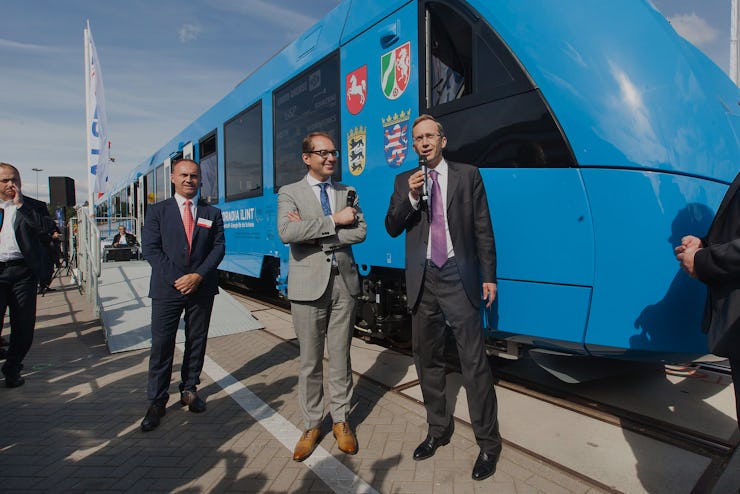Germany announced yesterday that it plans to introduce the world’s first hydrogen-powered passenger train, the Coradia iLint, in December 2017.
The Coradia iLint runs on hydrogen fuel cells stored on its roof. This energy system is quieter, more efficient, and more environmentally friendly than the diesel trains it’s designed to replace. Alstom, the company that built the train, says that its only emission is a combination of steam and compressed water.
Alstom says the Coradia iLint can travel between 600 and 800 kilometers (roughly 370 and 500 miles) at 140 kilometers per hour (87 miles per hour) on a single tank. It can carry up to 300 passengers, 150 of them seated, and will produce as little noise as possible. Here’s a video explaining all this and more:
The video explains that Coradia iLint uses hydrogen fuel cells to generate energy that is stored by lithium-ion batteries if it isn’t used immediately. It also recovers energy when the train brakes. This helps ensure that the train is provided with a steady source of energy and is meant to increase the system’s overall efficiency.
Coradia iLint was unveiled at Berlin’s InnoTrans expo, where companies from around the world gather to show off the future of transportation. Alstom said at the expo that half of Germany’s train networks aren’t electrified and need to be replaced with something besides diesel, and several German states are on board:
Germany isn’t the only one looking to improve its transportation network. Amtrak plans to introduce high-tech trains by 2021, and New York is overhauling its subway system on that same timeframe. The future of transportation is pulling into the station.
